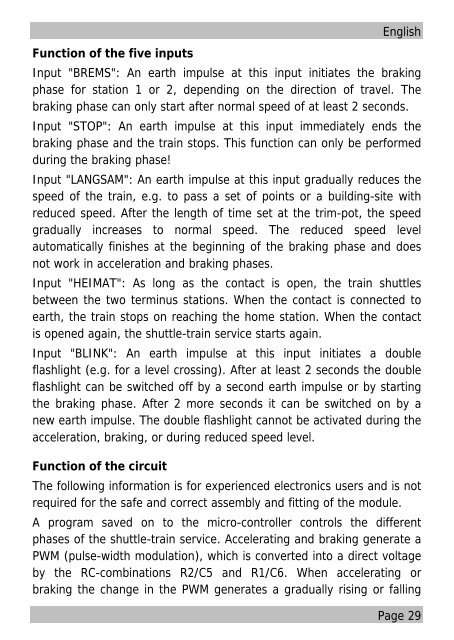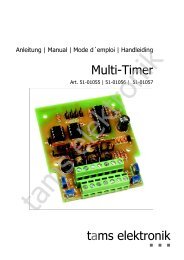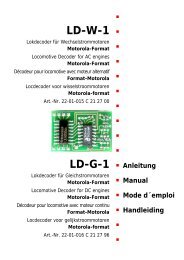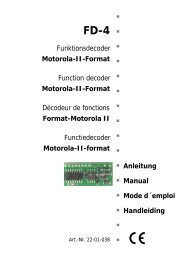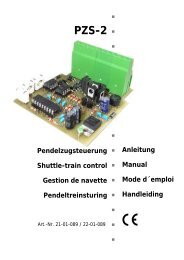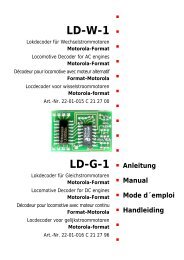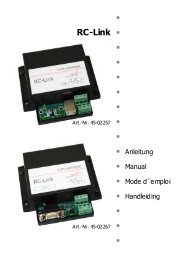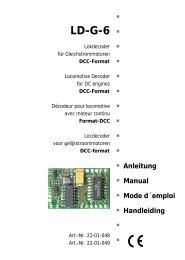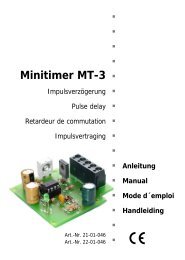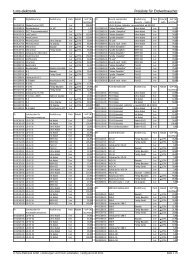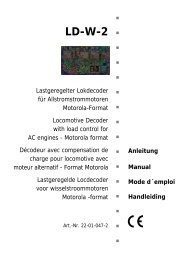Create successful ePaper yourself
Turn your PDF publications into a flip-book with our unique Google optimized e-Paper software.
Function of the five inputs<br />
English<br />
Input "BREMS": An earth impulse at this input initiates the braking<br />
phase for station 1 or 2, depending on the direction of travel. The<br />
braking phase can only start after normal speed of at least 2 seconds.<br />
Input "STOP": An earth impulse at this input immediately ends the<br />
braking phase and the train stops. This function can only be performed<br />
during the braking phase!<br />
Input "LANGSAM": An earth impulse at this input gradually reduces the<br />
speed of the train, e.g. to pass a set of points or a building-site with<br />
reduced speed. After the length of time set at the trim-pot, the speed<br />
gradually increases to normal speed. The reduced speed level<br />
automatically finishes at the beginning of the braking phase and does<br />
not work in acceleration and braking phases.<br />
Input "HEIMAT": As long as the contact is open, the train shuttles<br />
between the two terminus stations. When the contact is connected to<br />
earth, the train stops on reaching the home station. When the contact<br />
is opened again, the shuttle-train service starts again.<br />
Input "BLINK": An earth impulse at this input initiates a double<br />
flashlight (e.g. for a level crossing). After at least 2 seconds the double<br />
flashlight can be switched off by a second earth impulse or by starting<br />
the braking phase. After 2 more seconds it can be switched on by a<br />
new earth impulse. The double flashlight cannot be activated during the<br />
acceleration, braking, or during reduced speed level.<br />
Function of the circuit<br />
The following information is for experienced electronics users and is not<br />
required for the safe and correct assembly and fitting of the module.<br />
A program saved on to the micro-controller controls the different<br />
phases of the shuttle-train service. Accelerating and braking generate a<br />
PWM (pulse-width modulation), which is converted into a direct voltage<br />
by the RC-combinations R2/C5 and R1/C6. When accelerating or<br />
braking the change in the PWM generates a gradually rising or falling<br />
Page 29


